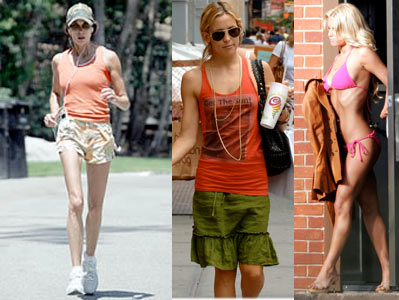Born in Bayonne, New Jersey, Kahn grew up in a Jewish family in the Bronx, then in Los Angeles following his parents' divorce. He attended the University of California, Los Angeles (UCLA), majoring in physics. During World War II he was stationed by the Army as a telephone linesman in Burma. Thus, like many of his colleagues at RAND in the 1950s,[citation needed] he had little personal experience of warfare. After World War II, he finished his B.S. at UCLA and embarked on a Ph.D. at Caltech; however, he had to drop out for financial reasons but did receive an M.Sc. Following a brief attempt to work in real estate, he was recruited to RAND by his friend Samuel Cohen, the inventor of the neutron bomb. He became involved with the development of the hydrogen bomb, commuting to the Lawrence Livermore Laboratory in Northern California and working closely with Edward Teller, John von Neumann, Hans Bethe, and mathematician Albert Wohlstetter.

Kate Hudson didn\x26#39;t pick the
Kahn's major contributions were the several strategies he developed during the Cold War to contemplate "the unthinkable", namely, nuclear warfare, by using applications of game theory. (Most notably, Kahn is often cited as the father of scenario planning.) During the mid-1950s, the Dwight D. Eisenhower administration's prevailing nuclear strategy had been one of "massive retaliation", enunciated by Secretary of State John Foster Dulles. According to this theory, dubbed the "New Look", since the Soviet Army was considerably larger than that of the United States, it therefore presented a potential security threat in too many locations for the Americans to counter effectively all at once. Consequently, the United States had no choice but to proclaim that its response to any Soviet aggression, anywhere, would be a nuclear attack.

Kate Hudson Diet For Fashion
Kahn considered this theory untenable because it was crude and potentially destabilizing. Arguably, the "New Look" invited nuclear attack by providing the Soviets with an incentive to precede any conventional, localized military action worldwide (e.g., in Korea, Africa, etc.) with a nuclear attack on U.S. bomber bases, thereby eliminating the Americans' nuclear threat immediately and forcing the U.S. into the land war it sought to avoid.

KATE HUDSON HOT?

KATE HUDSON

Kate Hudson and scary

Kate Hudson Is NOT Fat!

Kate Hudson didn\x26#39;t pick the
Kahn's major contributions were the several strategies he developed during the Cold War to contemplate "the unthinkable", namely, nuclear warfare, by using applications of game theory. (Most notably, Kahn is often cited as the father of scenario planning.) During the mid-1950s, the Dwight D. Eisenhower administration's prevailing nuclear strategy had been one of "massive retaliation", enunciated by Secretary of State John Foster Dulles. According to this theory, dubbed the "New Look", since the Soviet Army was considerably larger than that of the United States, it therefore presented a potential security threat in too many locations for the Americans to counter effectively all at once. Consequently, the United States had no choice but to proclaim that its response to any Soviet aggression, anywhere, would be a nuclear attack.

Kate Hudson Diet For Fashion
Kahn considered this theory untenable because it was crude and potentially destabilizing. Arguably, the "New Look" invited nuclear attack by providing the Soviets with an incentive to precede any conventional, localized military action worldwide (e.g., in Korea, Africa, etc.) with a nuclear attack on U.S. bomber bases, thereby eliminating the Americans' nuclear threat immediately and forcing the U.S. into the land war it sought to avoid.

KATE HUDSON HOT?

KATE HUDSON

Kate Hudson and scary

Kate Hudson Is NOT Fat!
No comments:
Post a Comment